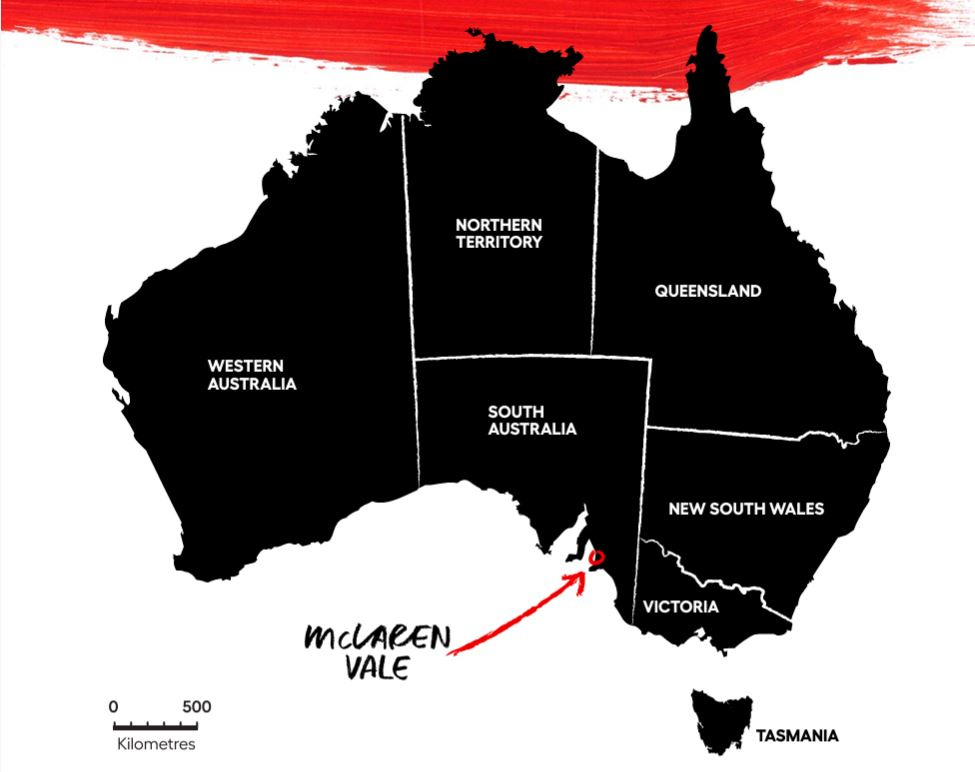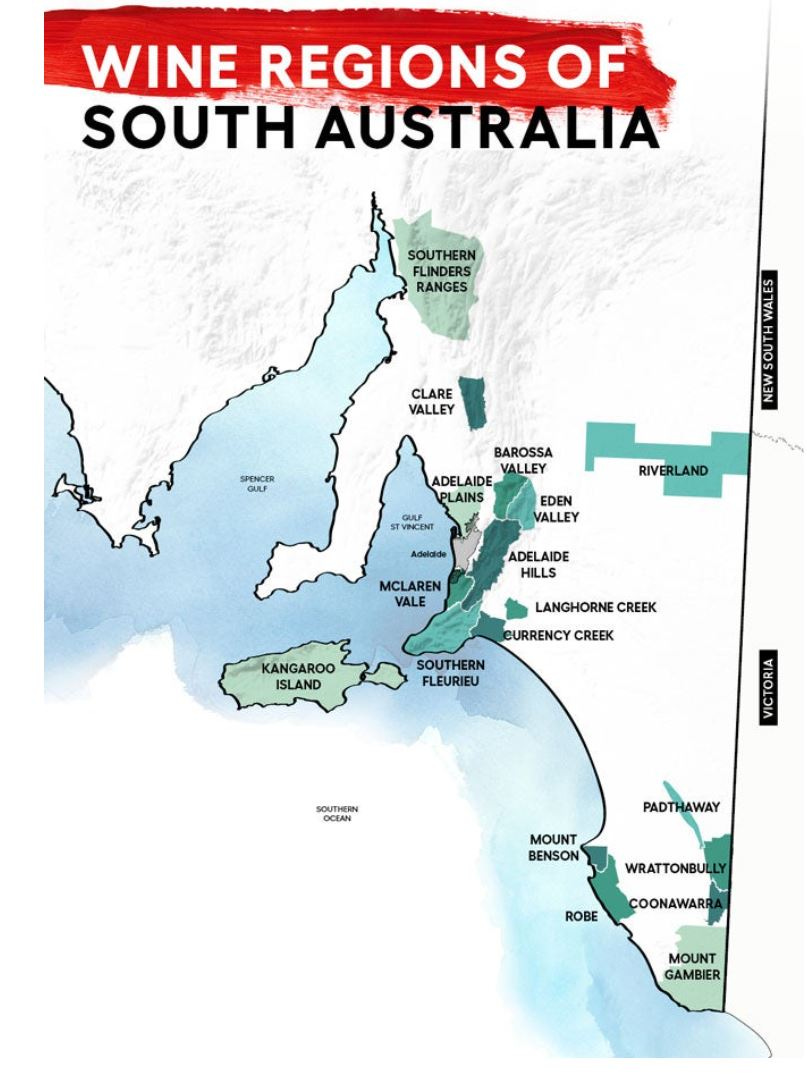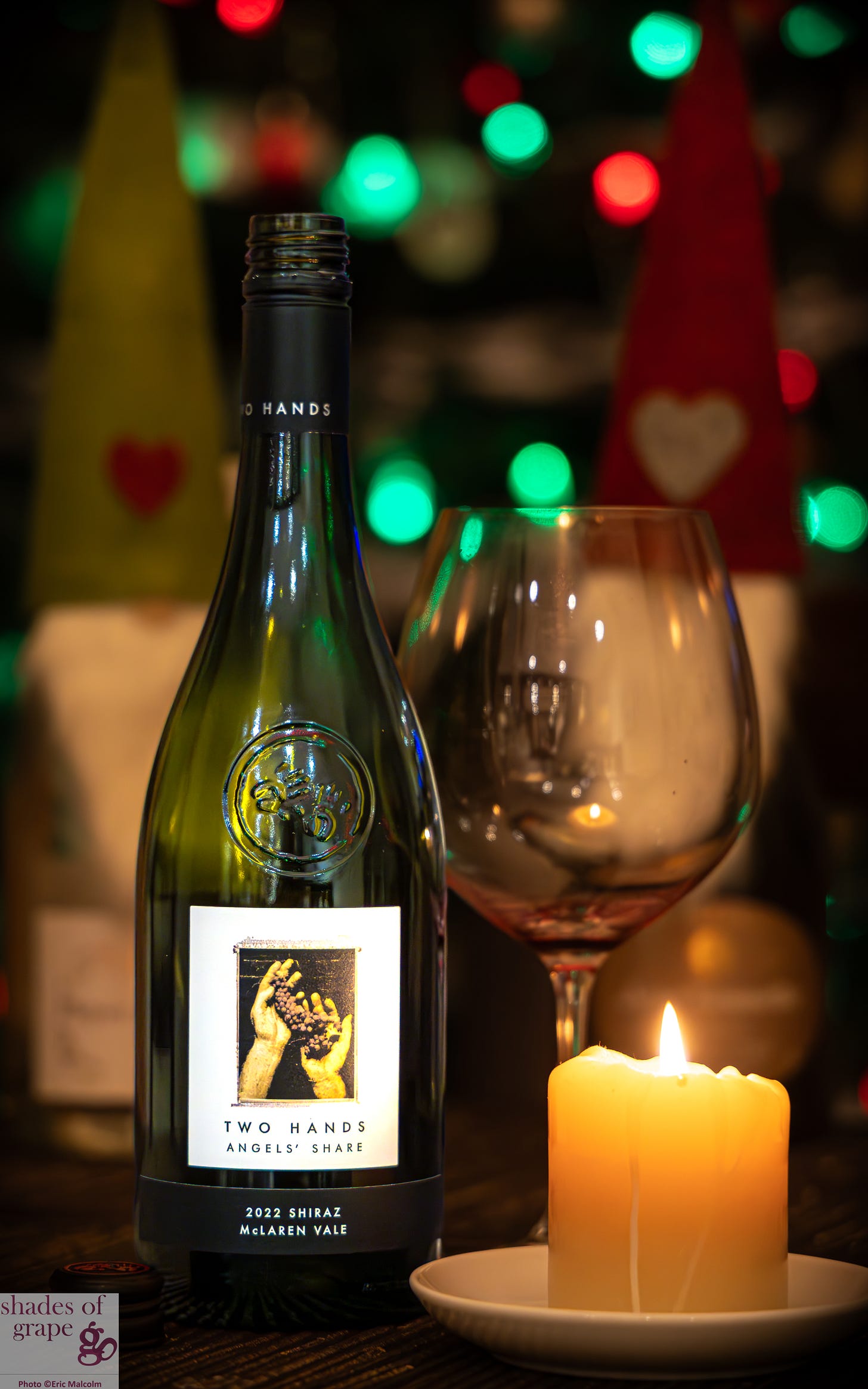About South Australian Shiraz
-exploring the McLaren vale sub-region, shiraz vs. syrah, non-european vs. european wine styles aka new world vs. old world
Thanks to all the paid subscribers for their support! Your support helps me buy wine for these weekly articles!
Appreciate my wine recommendations? Enjoy my personal wine curation service? Find my wine writing valuable? Consider upgrading to a paid subscription! Your support helps me keep sharing the world of wine with you.
Previously we learned how wine has been made in Australia since the 1800s and that the father of Australian vine growing is James Busby. Today we focus on Shiraz, which is the top planted grape with plantings in all Australian wine growing regions. Grape vines are grown in all Australian states except the Northern Territory and Queensland.
Let’s zone into South Australia where historic estates and some of the most famous Australian wine regions reside.
I really don’t know Australia. What would be the largest city in South Australia?
Adelaide, which is a coastal city, is shown in grey on the map above.
Most of the state of South Australia is too hot for grape growing. Most vines are therefore grown near the coast where there are cooling influences. You may be familiar with Barossa Valley, Adelaide Hills, and McLaren Vale, which are all in relative proximity to the city of Adelaide.
McLaren Vale is only about 45 minutes south of Adelaide, on the Fleurieu Peninsula where South Australia wines began in 1838. The McLaren Vale sub-region lies between the Mount Lofty Ranges and white sand beaches, featuring rolling hills, charming villages, and rugged coastlines.
The top 3 McLaren Vale varieties are Shiraz, Cabernet Sauvignon and Grenache.
You have never told the story of why Australians call the Syrah grape Shiraz.
Indeed, those two names are synonymous. Australia started using the name Shiraz in the mid-19th century even though the vines were Syrah believed to be sourced from the Rhône Valley of France. How the name became to be is still unknown. Some say it was a labelling mistake when the original cuttings arrived. Others say it was simply pronounced differently due to the Australian accent and eventually got its own spelling.
Nowadays, the name Shiraz worldwide has also come to represent a new world style or richer, fuller-bodied expression of the grape. Even Australians recently have produced a more medium bodied wine, more European in style, labelling it Syrah.
I hate to admit it, but I am not a fan of Shiraz.
There could be a couple of reasons for that. Like most wine making countries with any history, there has been a winemaking low point. For Australian Shiraz that low may be the 2000s and the ‘critter wine’ movement. These wines were often made for the ‘near-wine’ drinkers’ palate with higher sugar, lower acidity, and lower tannins. These were often mass-produced wines without much care and attention to the grape growing. Shiraz, if left too long on the vine, can quickly lose acidity and consequently have high sugar. These wines can be quite jammy tasting.
Of course there is still some commodity wine produced in Australia. But look for higher quality Shiraz before writing the style off completely.
Do you like Syrah?
I do!
So try different styles of Shiraz. Some of my personal curation clients do not like Syrah and consequently do not like Shiraz. We have narrowed it down to the “meaty” flavor that Syrah/Shiraz wine can have. We have since found that they may like them if that flavor leans more toward smoked meat, salami, or bacon!
I bet this would help you identify Shiraz/Syrah in a blind tasting.
Indeed, so do the black pepper notes.
In addition to those flavors, you can expect red or black plum and blackberry fruit notes as well as herbal notes, which can be eucalyptus. (This is an environmental factor – see this article on terroir.)
This leads me to another theory on people’s taste preferences.
I have noticed that some people tend to not like Australian wines. It doesn’t matter what grape I recommend; they do not like it regardless of whether they like that same grape from another country. What is interesting is that there are so many Australian regions with various climates and soil types that I find it peculiar that a person would simply not like Aussie wines. I think it may be the eucalyptus notes that they dislike.
The featured wine is the Two Hands Angels’ Share Shiraz McLaren Vale 2022.
Odd name!
Two Hands is the producer’s name and Angels’ Share is the name of the wine, referring to evaporation when wine is aged in wood barrels. There is sufficient porosity in the wood to allow for some liquid loss by evaporation.
Historically this was called the angel’s share. It was seen as an offering to heaven as a sacrifice in exchange for safety. Or that angels watched over their wine and consequently took their share.
Using my recommendations? Consider upgrading to a paid subscription.
Two Hands Angels’ Share Shiraz McLaren Vale 2022 from South Australia
Style: New world style full bodied red
Varieties: Shiraz
This bright, intense fruit driven wine has flavors of tart blueberry & strawberry, cranberries, light strawberry compote, dried thyme, mint, earth, cloves, and savory. Its high quality ripe tannins are quite high and have a slight grip. This wine has a full body and a persistent finish.
Best pairings: Turkey with cranberry sauce, Duck with a berry glaze, Lamb chops, BBQ ribs, Beef brisket, Spicy sausage including lamb merguez, Aged cheddar or Blue cheese.
Serving Temperature: 16-18 degrees Celsius
Serving Tips: Enjoy! No decanting necessary.
Price: ~$34 Cdn
I have compiled all my wine recommendations in one place. I will do my best to keep this up to date. I also include the link(s) to the article in which the wine was featured.
Like what you are reading? Click on the ❤ to let me know it resonated with you!
SOURCES:
Australian wine. (no date) Available at: https://www.australianwine.com/en-AU/our-story/articles/the-ultimate-guide-to-south-australia-s-wine-regions (Accessed: 01 January 2025).
Harding, J. and Robinson, J. (2023) The oxford companion to wine. Oxford, United Kingdom: Oxford University Press.
MacNeil, K. (2022) The wine bible. New York, NY: Workman Publishing.
Premium australian shiraz (2024) Two Hands Wines. Available at: https://www.twohandswines.com/varietals/shiraz/ (Accessed: 01 January 2025).
Wine & Spirit Education Trust (2021) D3: Wines of the World - An accompaniment to the WSET Level 4 Diploma in Wines. Version 1.2. London: Wine & Spirit Education Trust.







Yes, I was a link in the distribution chain at the time. I had the good fortune to travel with Dan Phillips of The Grateful Palate (not sure if it still exists). Dan was an epicure in addition to being a wine guy, so we went to some terrific restaurants.
Excellent post, and makes me nostalgic for my time in Australia. The seemingly perennial boom and bust cycle of Australian Shiraz is really interesting, from The Great Vine Pull forward.